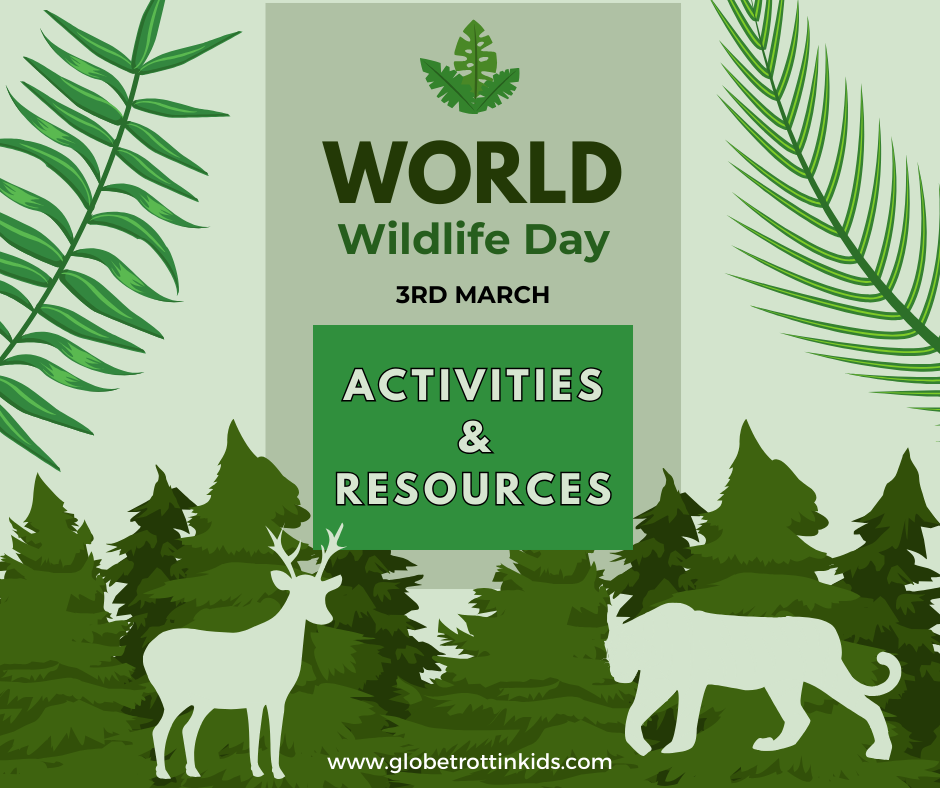World Wildlife Day Activities & Resources
World Wildlife Day, observed annually on March 3rd, is a global celebration that raises awareness about the importance of wildlife conservation and biodiversity. The day highlights the need to protect endangered species and their habitats.

Celebrating World Wildlife Day in the classroom provides valuable opportunities for students to learn about the importance of biodiversity, wildlife conservation, and environmental stewardship.
By engaging in activities related to wildlife protection, students can develop a deeper understanding of ecological concepts, empathy for endangered species, and a sense of responsibility toward preserving our planet’s natural resources.
Additionally, incorporating World Wildlife Day into the curriculum fosters critical thinking, scientific inquiry, and global citizenship skills, empowering students to become informed advocates for environmental sustainability and wildlife protection.
World Wildlife Day Activities
- Wildlife Art: Encourage students to create artwork inspired by their favorite animals or habitats. They can draw, paint, or craft sculptures using recyclable materials to represent different wildlife species.
- Animal Research Projects: Assign each student a specific animal to research, including its habitat, diet, behavior, and conservation status. Students can present their findings through posters, presentations, or creative reports.
- Nature Walk: Take students on a nature walk around the school grounds or local park to observe wildlife in their natural habitat. Provide binoculars or magnifying glasses for close observation, and encourage students to record their observations in nature journals.
- Storytelling: Read aloud books or stories about wildlife conservation and endangered species. Afterward, facilitate a discussion about the importance of protecting wildlife and brainstorm ways students can help make a positive impact.
- Habitat Dioramas: Have students work in groups to create dioramas depicting different animal habitats, such as forests, oceans, or grasslands. They can use art supplies, recycled materials, and toy animals to construct their dioramas, emphasizing the importance of preserving diverse ecosystems.
- Guest Speakers: Invite local wildlife experts, conservationists, or park rangers to speak to the class about their work protecting wildlife and habitats. Students can ask questions and learn about real-world conservation efforts in their community.
- Virtual Field Trips: Take a virtual field trip to a wildlife sanctuary, zoo, or aquarium. Many organizations offer virtual tours and educational resources that allow students to learn about endangered species and conservation initiatives from around the world.
- Seed Planting: Teach students about the importance of native plants for wildlife habitats. Have them plant seeds of native flowers or shrubs in a designated garden area on school grounds, creating a mini wildlife habitat to attract pollinators like butterflies and bees.
World Wildlife Day Resources
Animal Toolkits Information guides and activities for students to learn how their actions help shape the future of nature. The Tiger Toolkit provides a resource guide and six activities around this iconic species, the threats they face, and what we can do to protect tigers for generations to come.
Additional animal toolkits include freshwater dolphins, elephants, polar bears, and monarch butterflies. Other topics, such as ocean conservation and biodiversity, are also provided. *Available in Spanish.
WWF Conservation in the Classroom Bring conservation and science to life with a virtual visit from an explorer in the field. The free 45-minute events highlight the work being done to protect species and habitats around the world.
Quiz: Test Your Endangered Species Knowledge Learn about some of the animals threatened in the United States and around the world. Use the information to help educate students about endangered species, habitat loss, and conservation efforts around the world.

National Geographic Kids offers a wealth of articles, videos, games, and activities focused on wildlife and nature. Their website covers a wide range of topics, from animal profiles to environmental issues, suitable for elementary-aged learners.
San Diego Zoo Wildlife Explorers provides educational videos, animal profiles, and activities designed for young learners. The website offers virtual tours of the zoo, live animal cams, and information about wildlife conservation projects.
